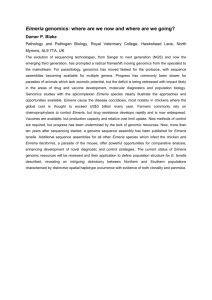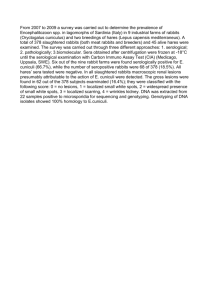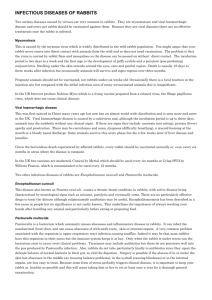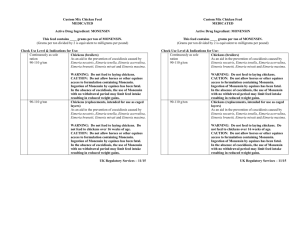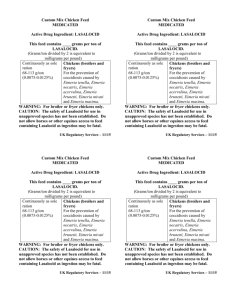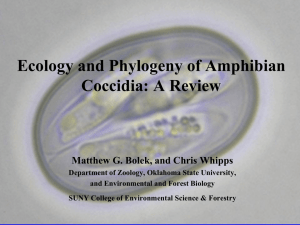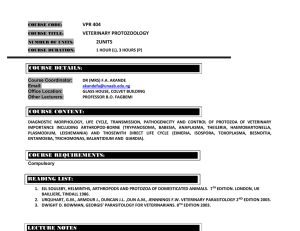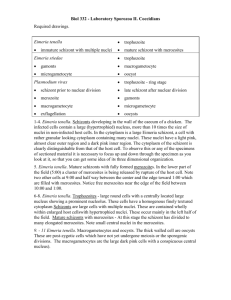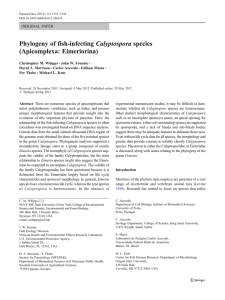Kimberley Cohen, DVM Kimberley
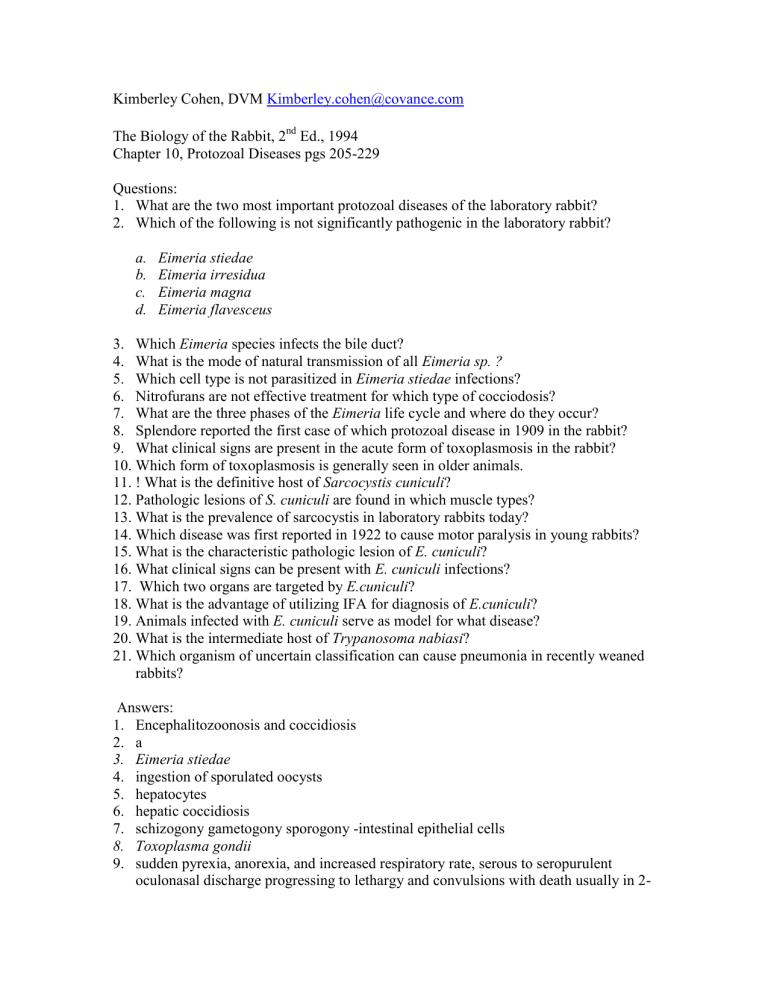
Kimberley Cohen, DVM Kimberley.cohen@covance.com
The Biology of the Rabbit, 2 nd
Ed., 1994
Chapter 10, Protozoal Diseases pgs 205-229
Questions:
1. What are the two most important protozoal diseases of the laboratory rabbit?
2. Which of the following is not significantly pathogenic in the laboratory rabbit?
a. Eimeria stiedae b. Eimeria irresidua c. Eimeria magna d. Eimeria flavesceus
3. Which Eimeria species infects the bile duct?
4. What is the mode of natural transmission of all Eimeria sp. ?
5. Which cell type is not parasitized in Eimeria stiedae infections?
6. Nitrofurans are not effective treatment for which type of cocciodosis?
7. What are the three phases of the Eimeria life cycle and where do they occur?
8. Splendore reported the first case of which protozoal disease in 1909 in the rabbit?
9. What clinical signs are present in the acute form of toxoplasmosis in the rabbit?
10. Which form of toxoplasmosis is generally seen in older animals.
11. ! What is the definitive host of Sarcocystis cuniculi ?
12. Pathologic lesions of S. cuniculi are found in which muscle types?
13. What is the prevalence of sarcocystis in laboratory rabbits today?
14. Which disease was first reported in 1922 to cause motor paralysis in young rabbits?
15. What is the characteristic pathologic lesion of E. cuniculi ?
16. What clinical signs can be present with E. cuniculi infections?
17. Which two organs are targeted by E.cuniculi
?
18. What is the advantage of utilizing IFA for diagnosis of E.cuniculi
?
19. Animals infected with E. cuniculi serve as model for what disease?
20. What is the intermediate host of Trypanosoma nabiasi ?
21. Which organism of uncertain classification can cause pneumonia in recently weaned rabbits?
Answers:
1. Encephalitozoonosis and coccidiosis
2. a
3. Eimeria stiedae
4. ingestion of sporulated oocysts
5. hepatocytes
6. hepatic coccidiosis
7. schizogony gametogony sporogony -intestinal epithelial cells
8. Toxoplasma gondii
9. sudden pyrexia, anorexia, and increased respiratory rate, serous to seropurulent oculonasal discharge progressing to lethargy and convulsions with death usually in 2-
8 days
10. chronic
11. cat
12. cardiac and skeletal
13. almost nil
14. Encephalitozoonosis
15. granulomatous encephalitis
16. Though infections are often latent, neurologic signs including tremors, convulsions, torticollis, paresis and coma can be seen
17. brain and kidney
18. ability to detect antibodies 2 weeks prior to histological evidence and at least 4 weeks before spores can be detected in the urine
19. enteric microsporidiosis
20. The rabbit flea, Spi! lopsyllus cuniculi
21. Pneumocystis carinii
